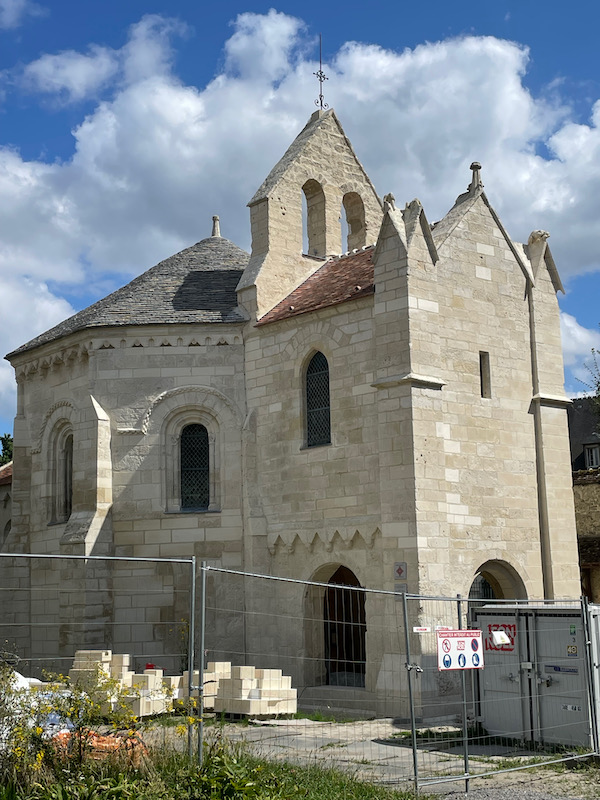Our Blog - Summer 2024 Trip - Laon, France
A fortified city on a plateau, Laon has medieval monuments and private houses from the 16th to 18th centuries. The permanent occupation of the upper city began around the middle of the 1st century BC. The first traces of the presence of Christianity date back to the 5th century, as evidenced by a paleo-Christian funerary stone that was found in 1998.
I'm not sure if there was some significance to the umbrellas, or if this was just another way to provide shade down one of the main shopping streets. But either way, it was quite pretty.
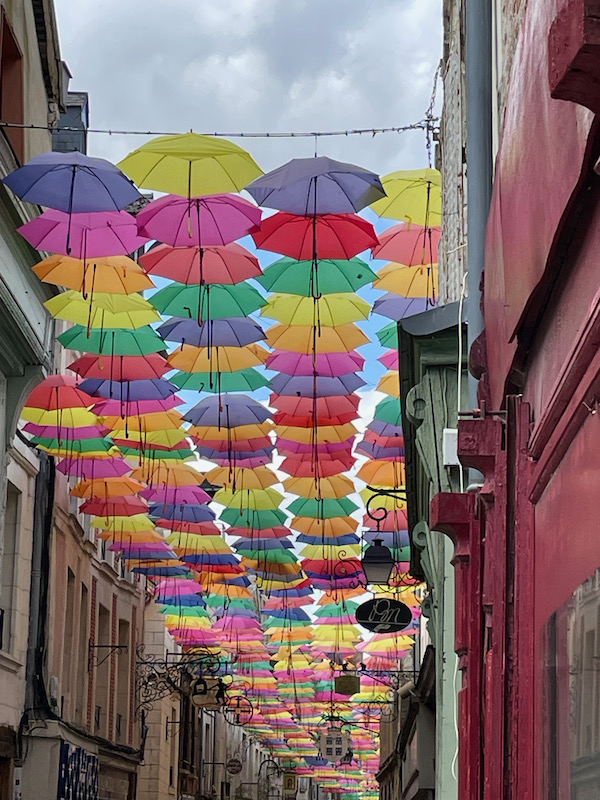
The tourist office is located in the first Hôtel-Dieu, built in the 12th century. It somewhat looks like it was damaged in WWI and lost the left half of the building, although I'm not sure if that is accurate or not (I couldn't find anything that clearly said why it looks like it is 1/2 missing).
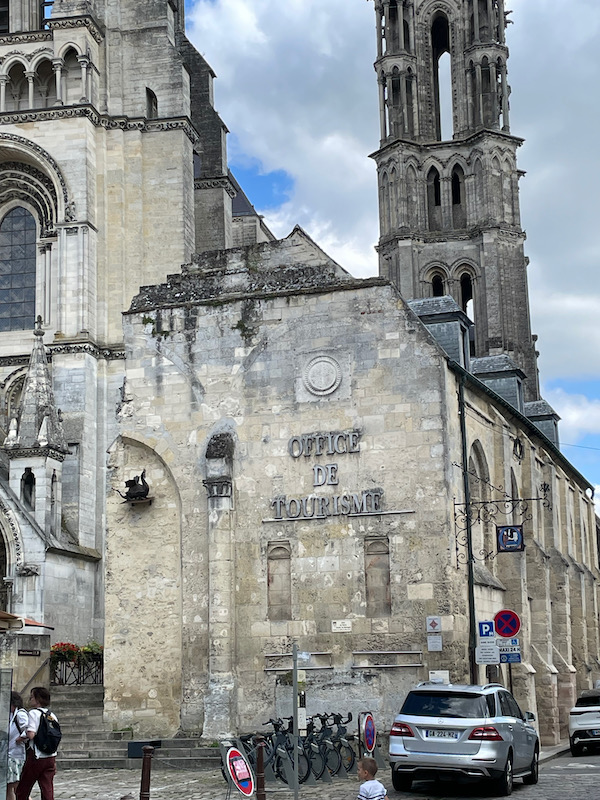
Just to the right of that is the Cathedral Notre Dame. They first cathedral here was probably in the 6th century but we know nothing about it. There was a Carolingian Cathedral in the 8th century, then a Romanesque one in the 11th century. When that one burned down in 1112, a new one was started in 1155. It was finally dedicated in 1238 and a spire was added to one of the towers in 1250.
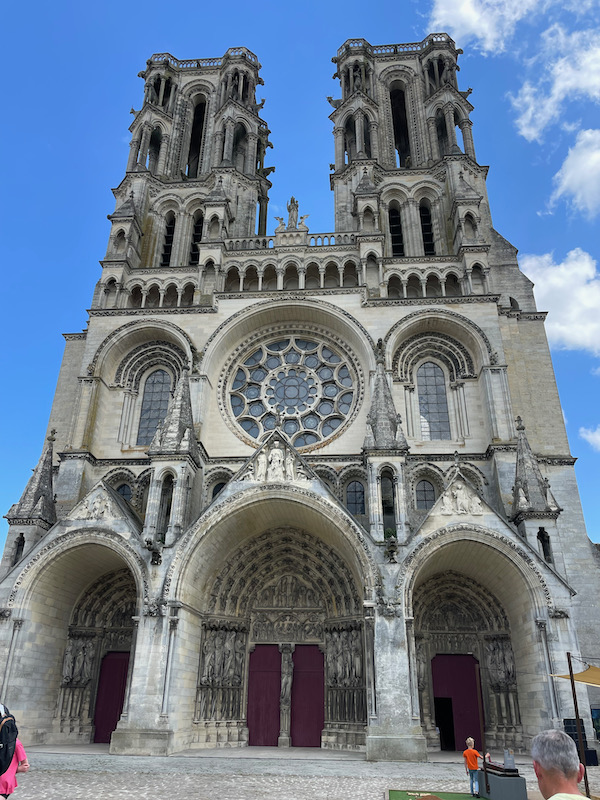
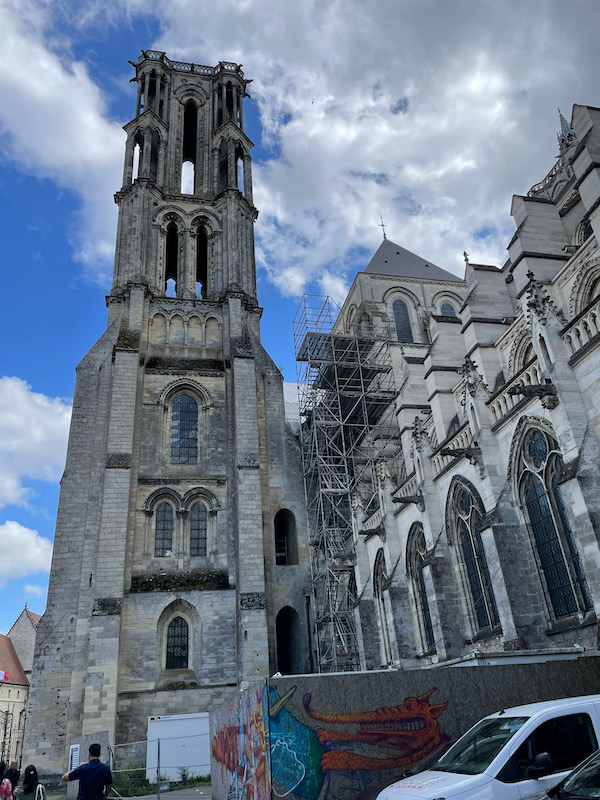
The two towers of the main façade are decorated with life-size statues of oxen. They pay homage to the oxen that transported the stone blocks from the nearby quarries. I attempted to get good pictures of them (but again, I need a better camera!!)
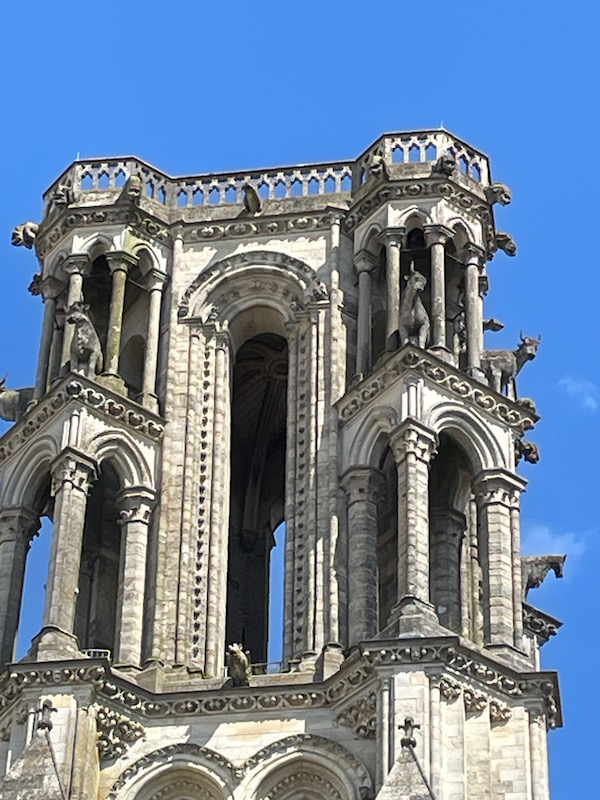
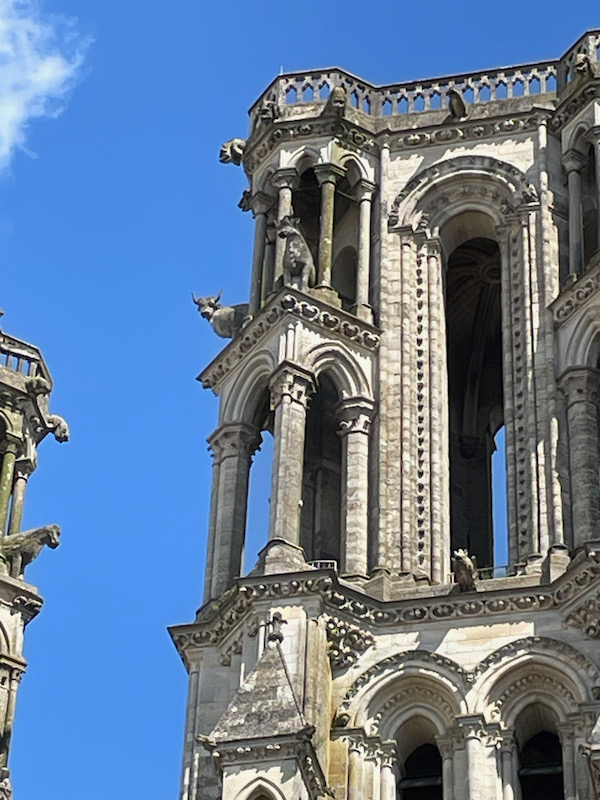
There are 3 portals, each with a large sculptured tympanum. Some of the sculptures date from the Middle Ages while others were destroyed in the 17th century and had to be recreated. I probably have WAY too much information on them, but here goes...
Starting at the left portal, the bottom shows the Nativity. We can see Mary lying down. If you look closely on the 2nd picture, you can see the head of a donkey and an ox. Then above, the left shows the 3 wise men offering their gifts to the baby Jesus and Mary, in the center, while Joseph and an angel look from the right.
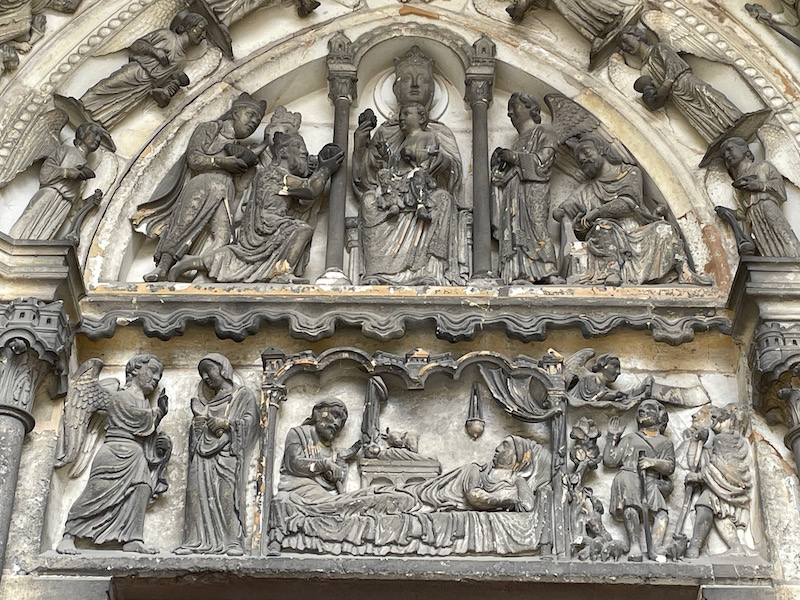
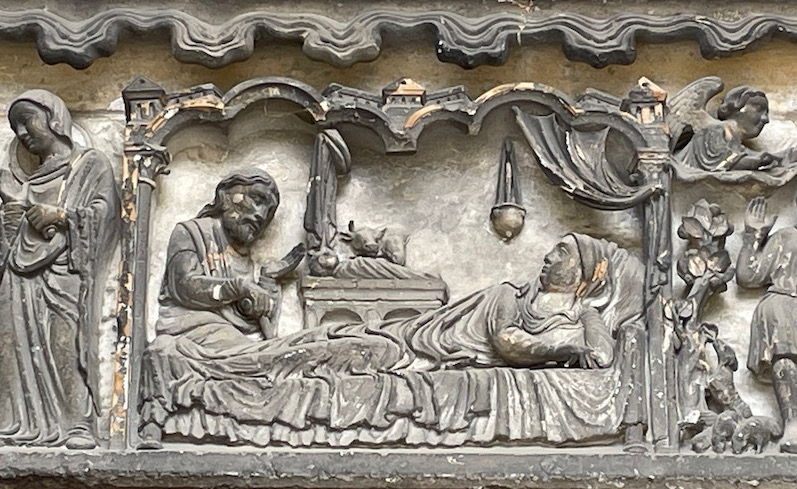
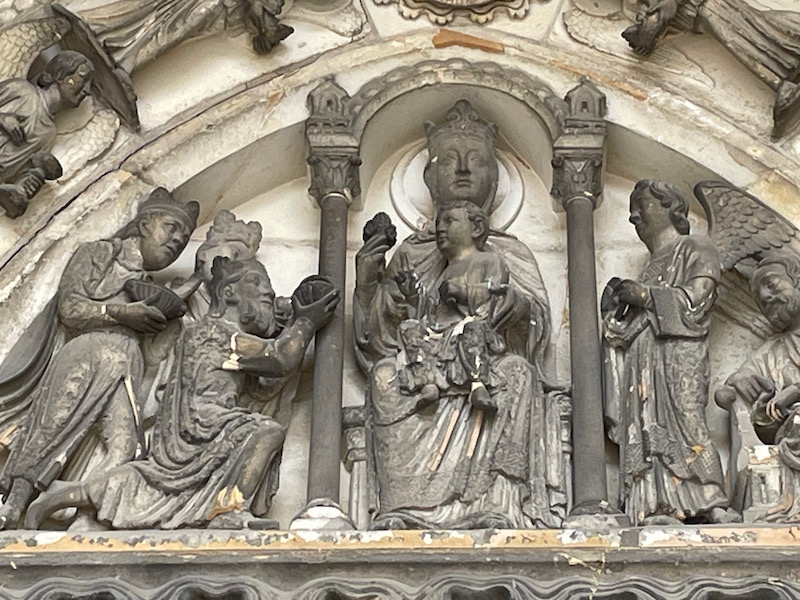
In the central portal, we see the Coronation of the Virgin. On the top part we have the Virgin Mary seated, carrying a scepter who looks at her son, also seated, holding a book between his left hand and thigh, with 2 angels on each side. The bottom I believe shows her death (but I didn't find specific info on it).
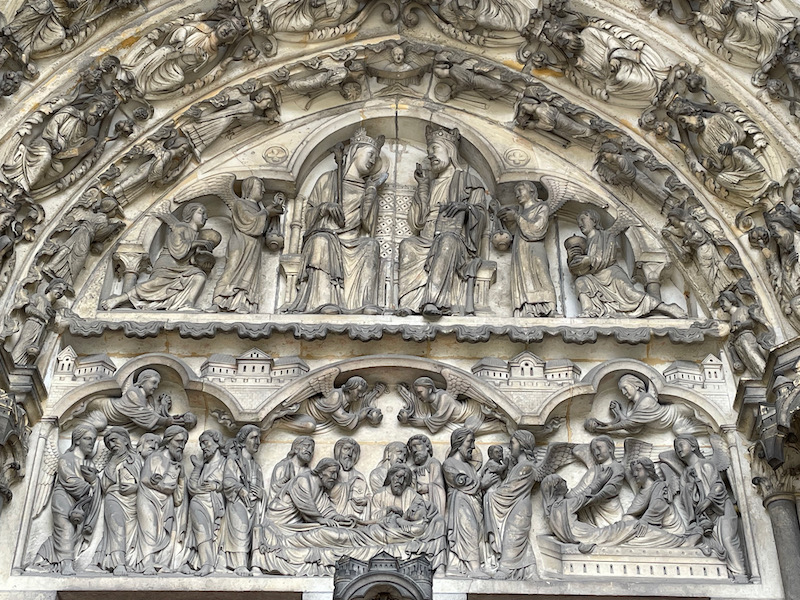
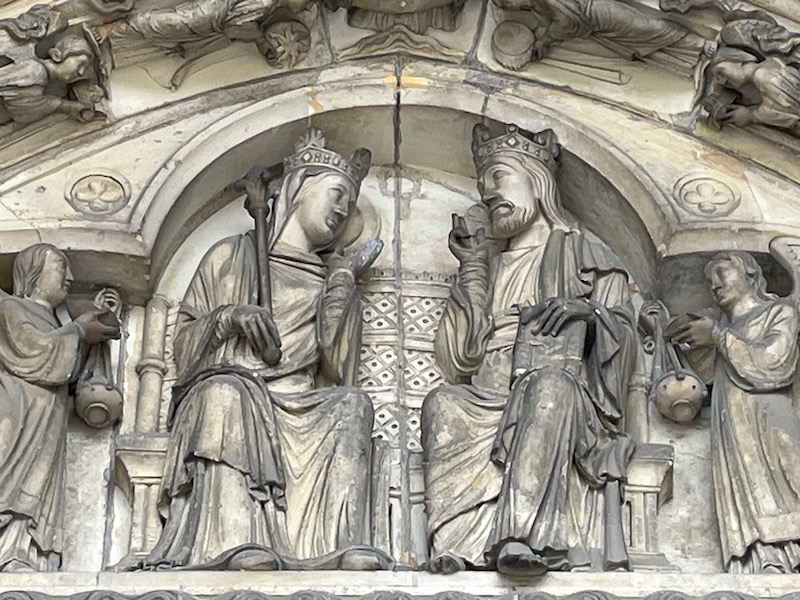
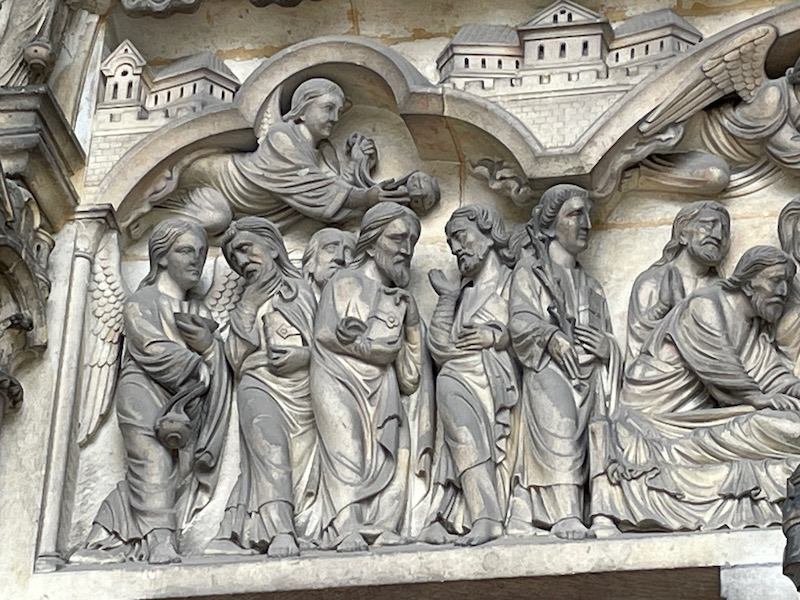
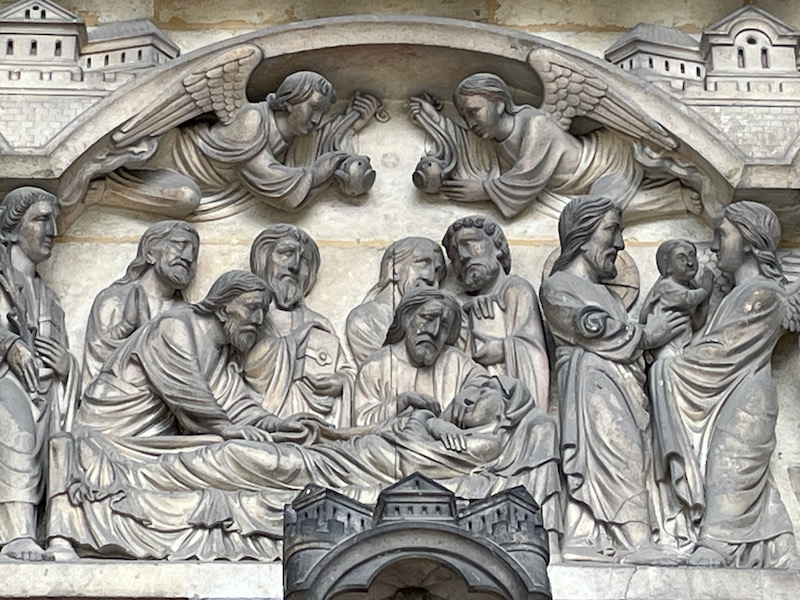
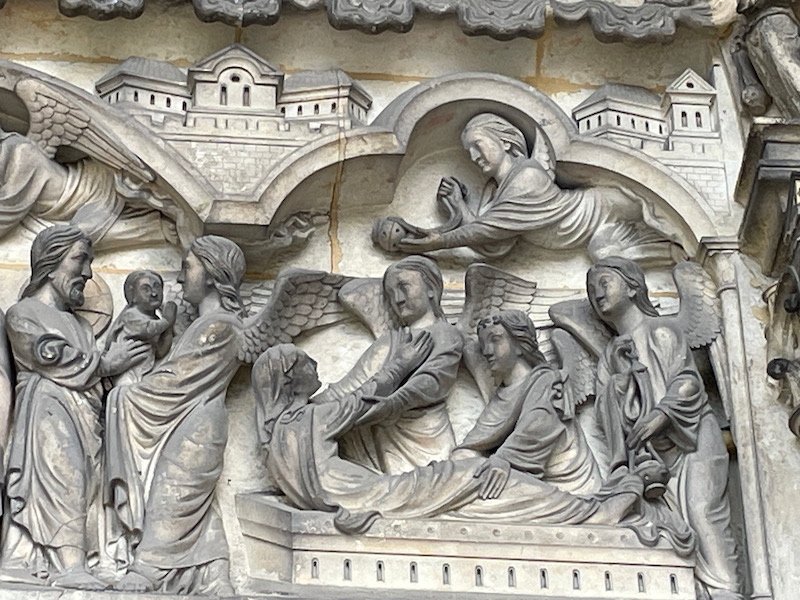
And finally on the right, the last judgement, which are the oldest sculptures, dating to the 12th century. At the top, we have Christ in majesty with angels above him carrying the cross, the nails, and the crown of thorns. To either side, we have the Virgin Mary and the apostles. At his feet, you can see the dead being resurrected (coffins being opened on the left side).
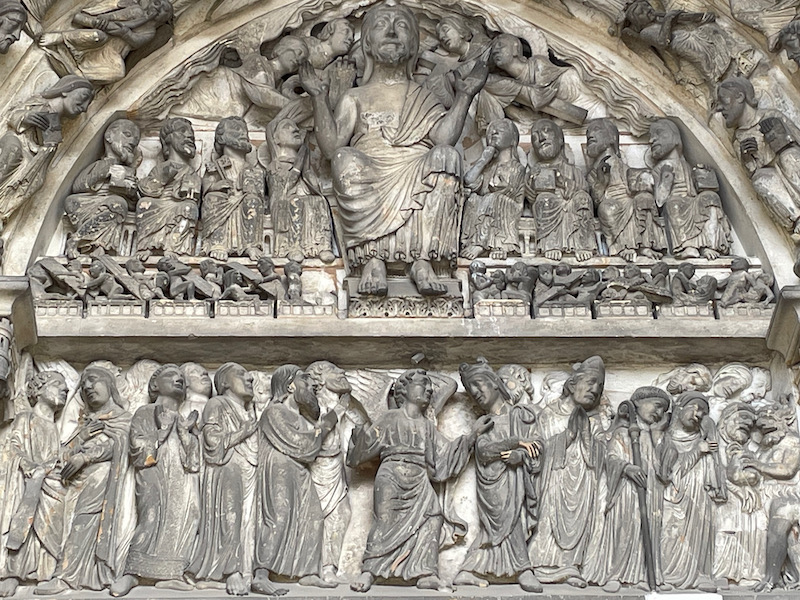
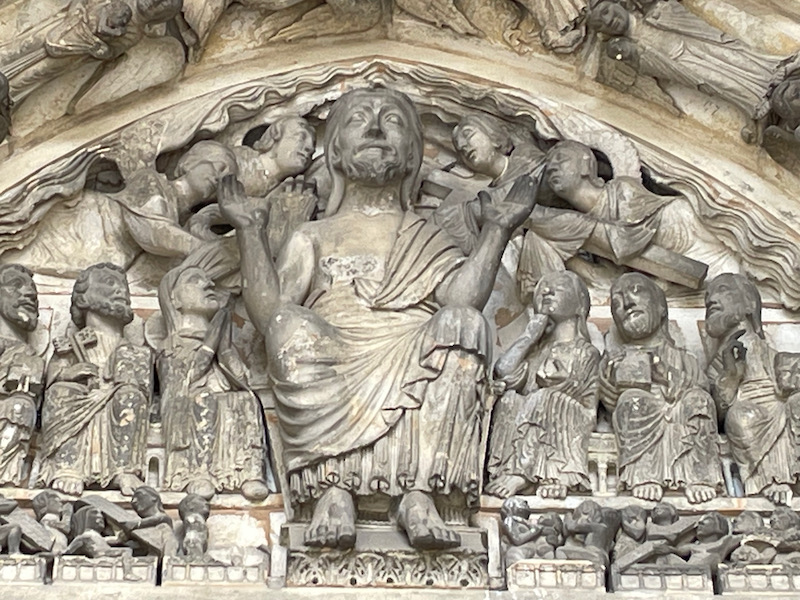
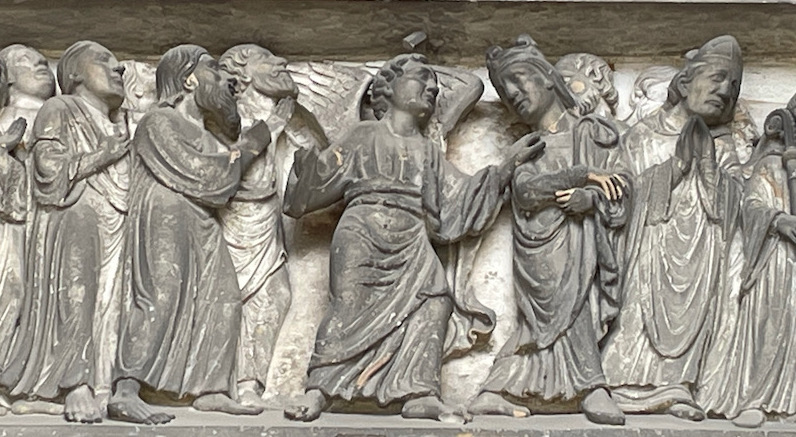
The nave is very tall, with ribbed vaults holding up the ceiling. There are basically 4 levels: the first level with the large arcades resting on piers. The 2nd picture , taken from the transept, shows the upper levels much better ... the second level has an open gallery of twin bays with full tracery. Then shorter "fake" galleries with 3 bays (you can see the wall just behind the open bays) before the final top level with the high, single-bay windows.
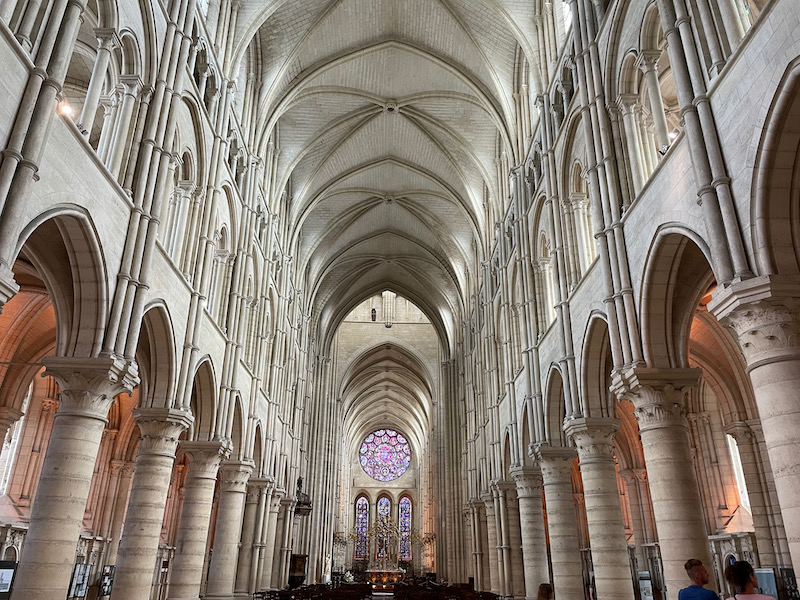
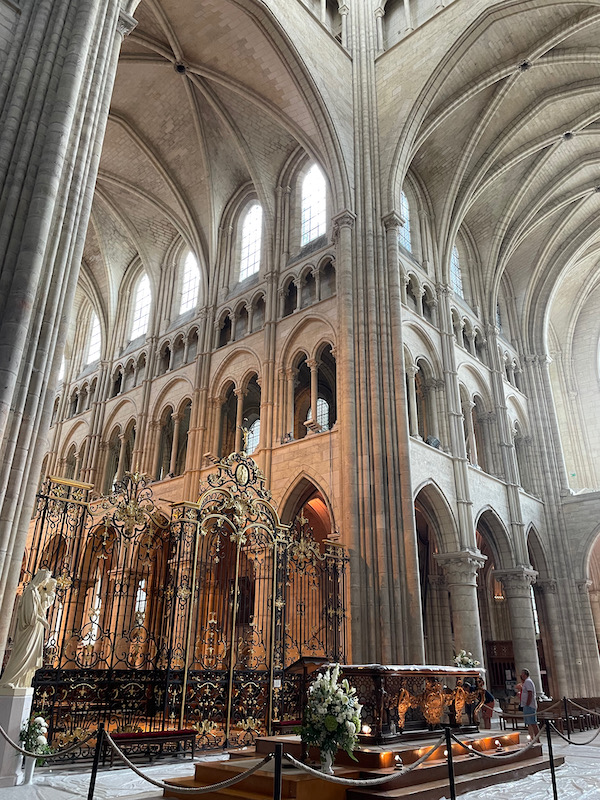
The choir is separated from the nave by an ornate wrought iron gate, gilded and painted. This dates from the first half of the 18th century and came from the former convent of the Celestines of Villeneuve-Saint-Germain. It was transported to the cathedral 1806 and installed in 1807.
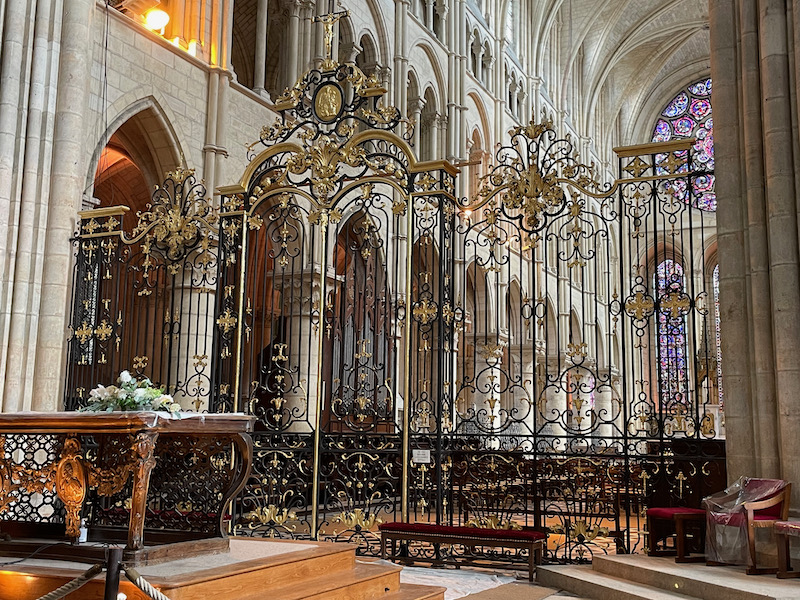
Initially, there were no side chapels but they were added between the buttresses in the 14th century. Between 1555 and 1697 the chapels were gradually closed with stone enclosures.
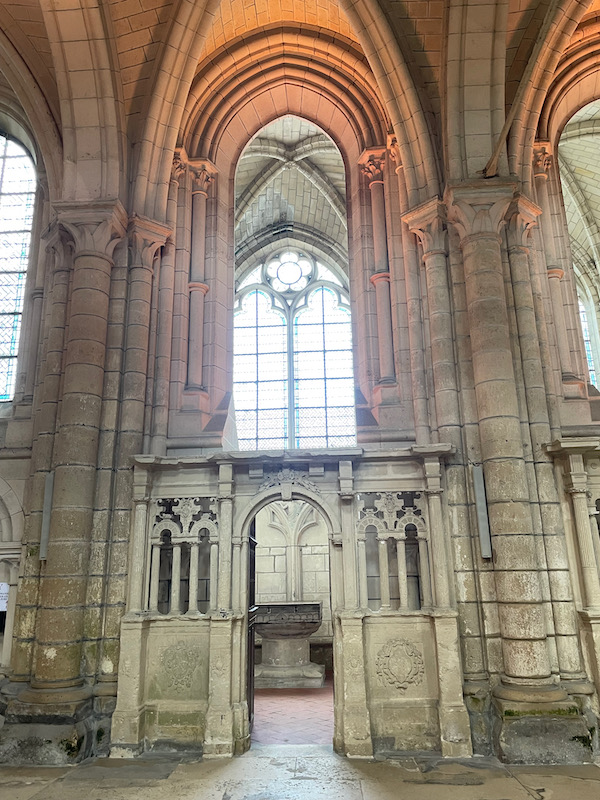
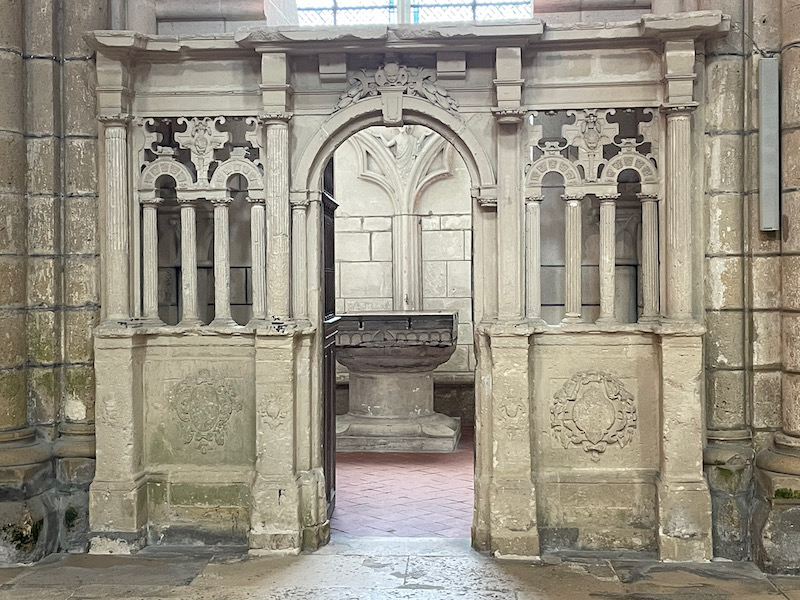
The carved wooden pulpit was created in 1681 (based on the date on the detailed picture of the carvings).
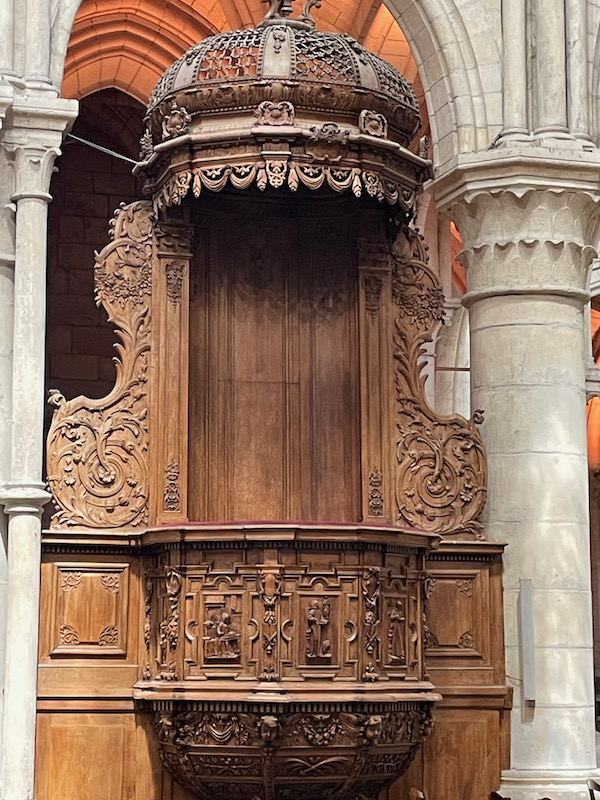
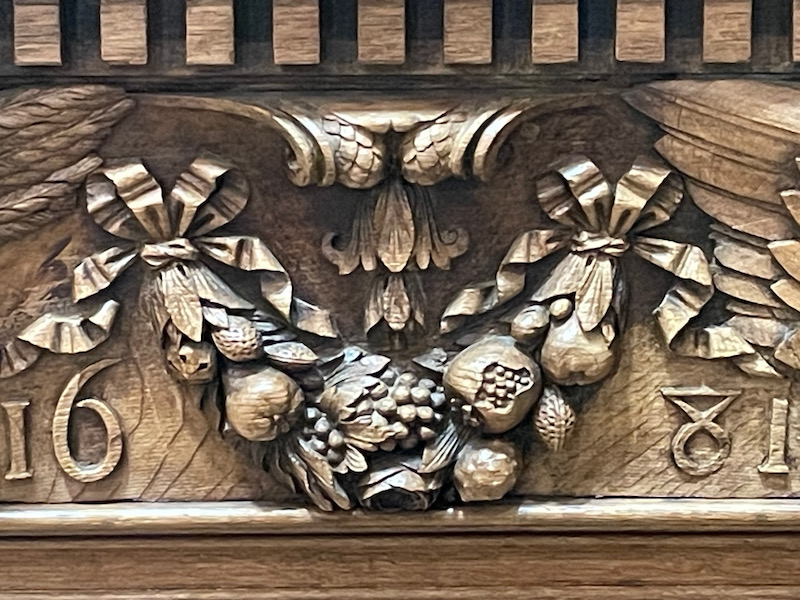
Around 1180, the stained glass windows of the north rose window (called the liberal arts window) were installed. While you can't really see these very well, but the middle is philosophy and then around it are things like grammar, astronomy, arithmetic, medicine, geometry, and music.
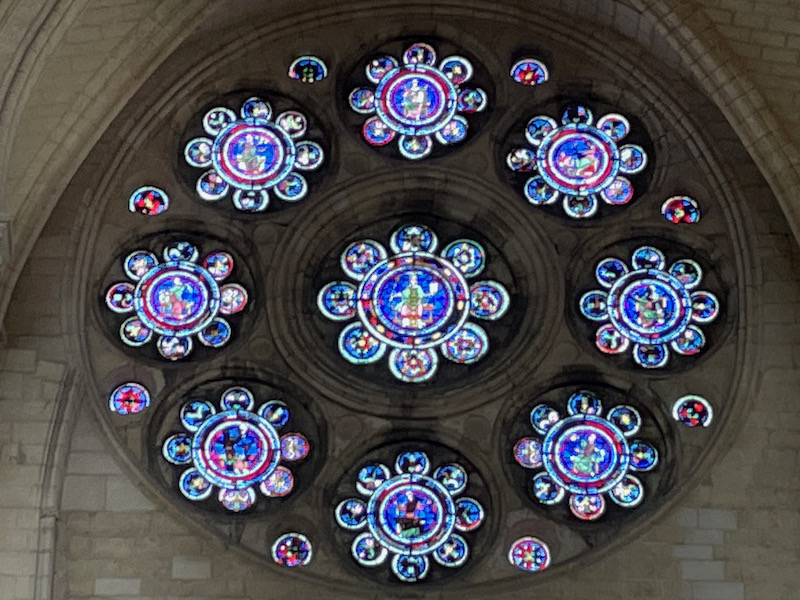
This is the rose window behind the altar in the choir.
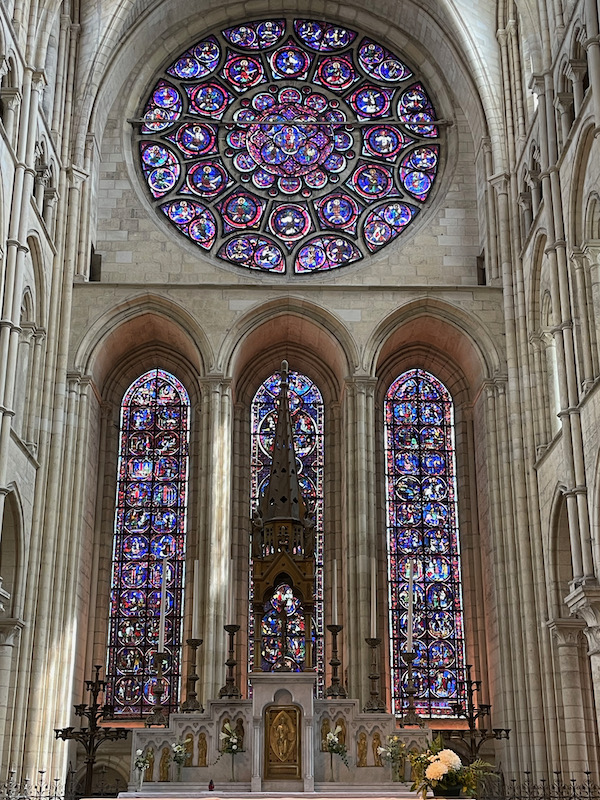
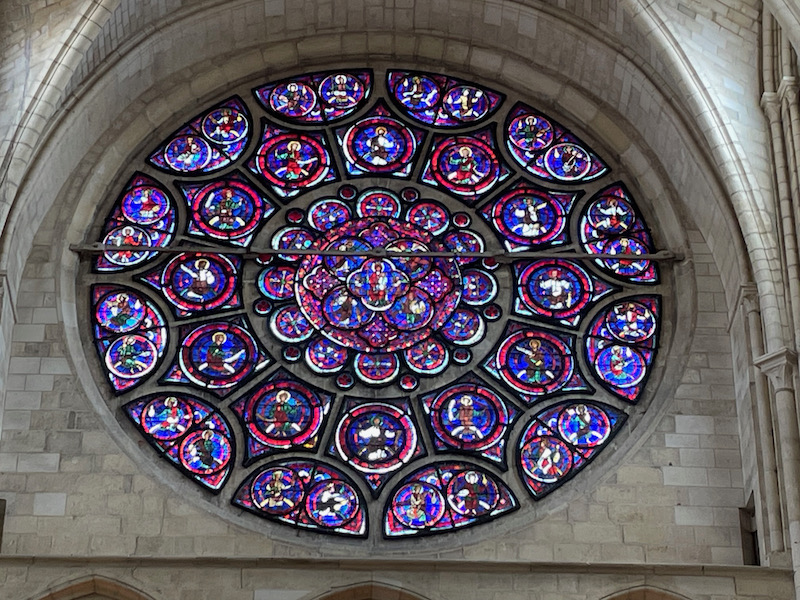
This detailed stained-glass window shows on the bottom left, the Annunciation, then the bottom right, the Visitation. The top two panes shows the Nativity.
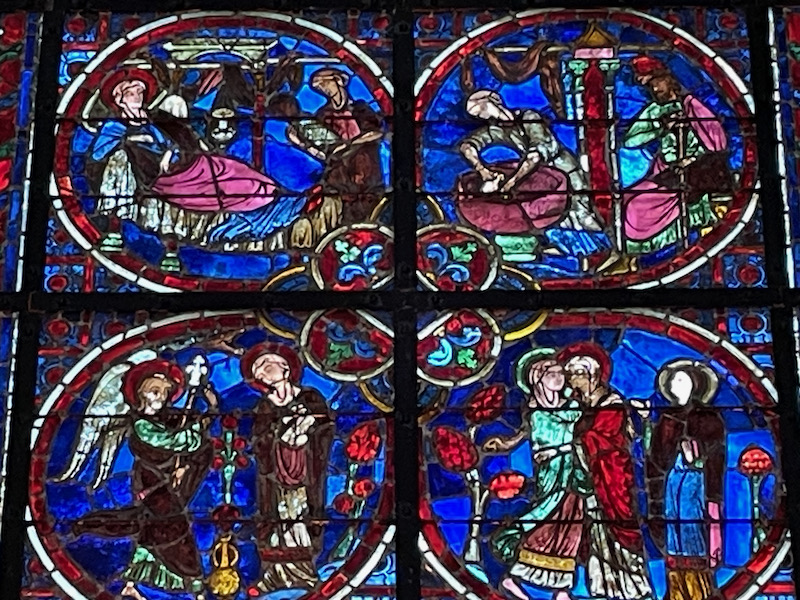
This window shows the last supper at the top, and then the entry of Jesus into Jerusalem in the 2 bottom panes.
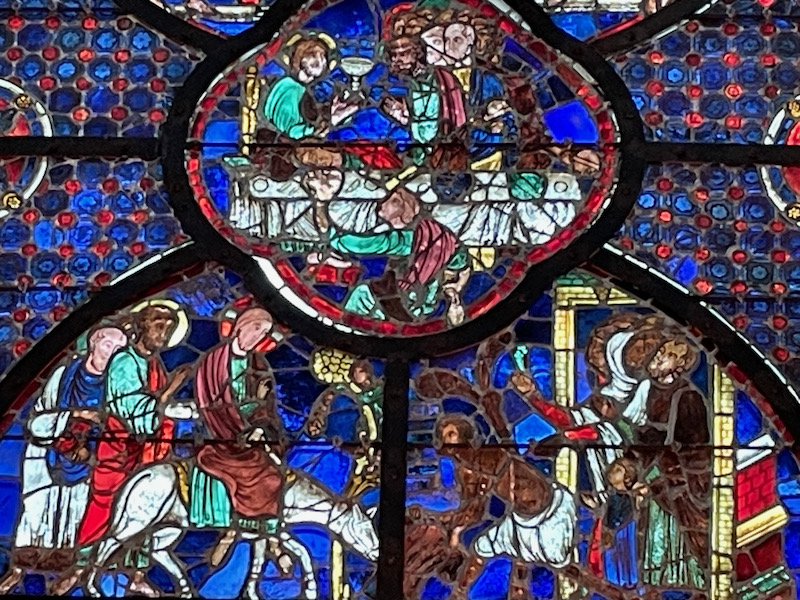
Back outside, this shows the side of the Church from the garden of the Bishops palace.
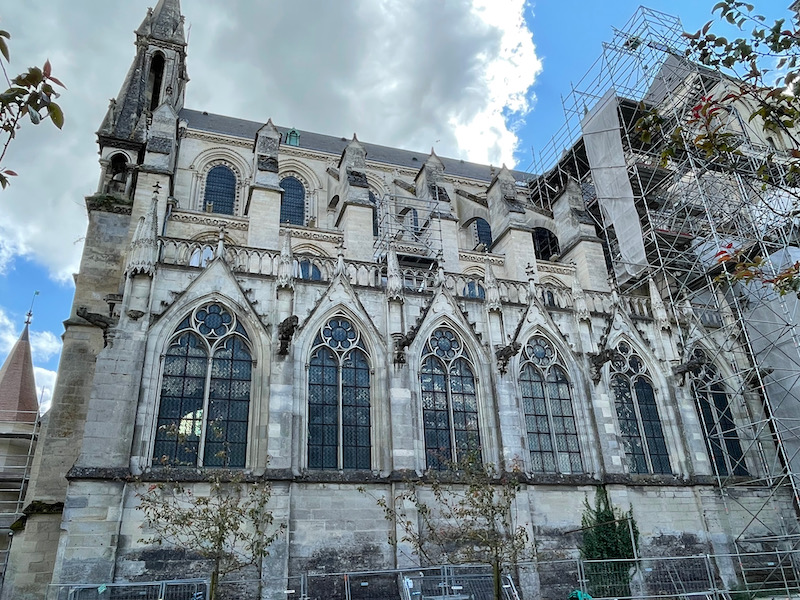
The bishopric here was founded in the 6th century with excavations in 1979 finding what is thought to be the first Episcopal palace. The next palace was built in the 12th century but burned down during a tax revolt in 1112. A new one was built in 1150s, then extended in the 15th and 17th centuries. The Revolution transformed the palace into the HQ of the district of Laon. In 1811, it was converted to house the courthouse. The first pictures are from the courtyard, where you can see this main building with 9 pointed Gothic arches forming an arcade. The windows on the first floor are also Gothic with pointed arches and carved tracery.
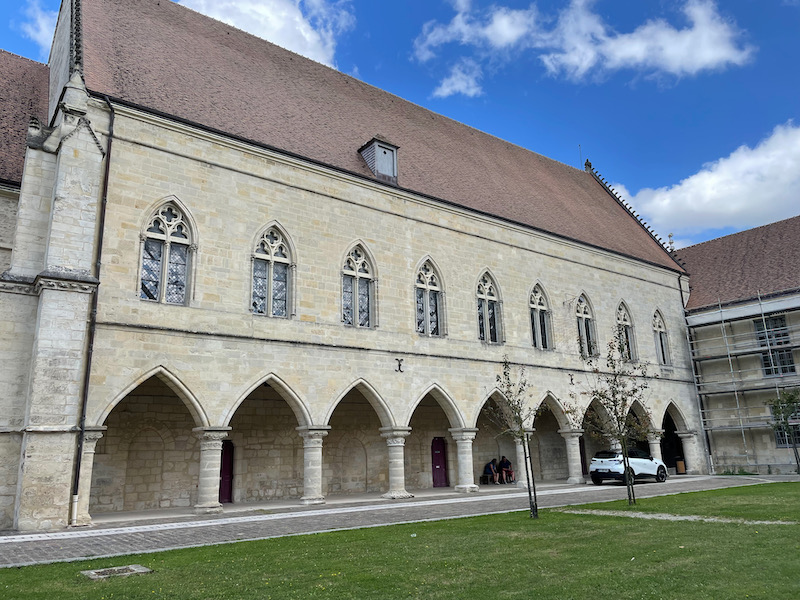
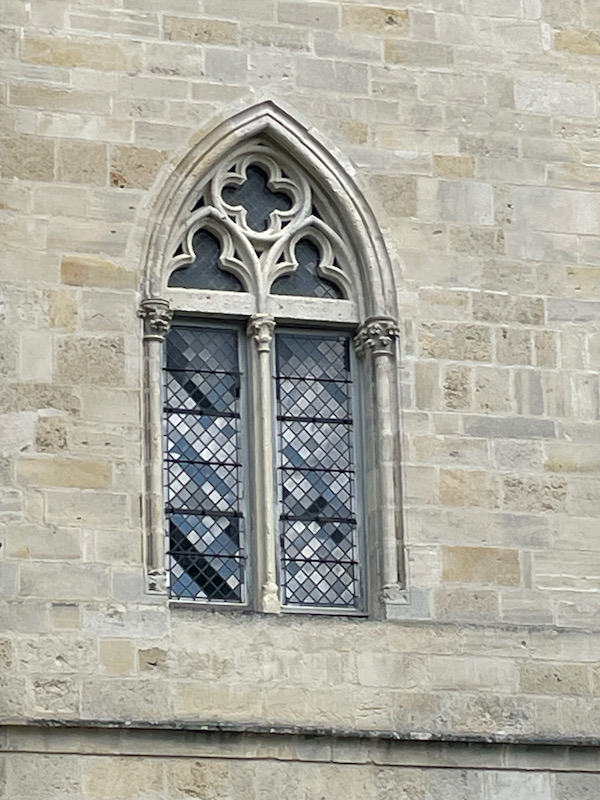
Then from the outside, looking from the ramparts up to the building, with medieval mullion windows on this side. A bit of trivia: a pit was dug in the courtyard in 1805 to cast the bells of the cathedral.
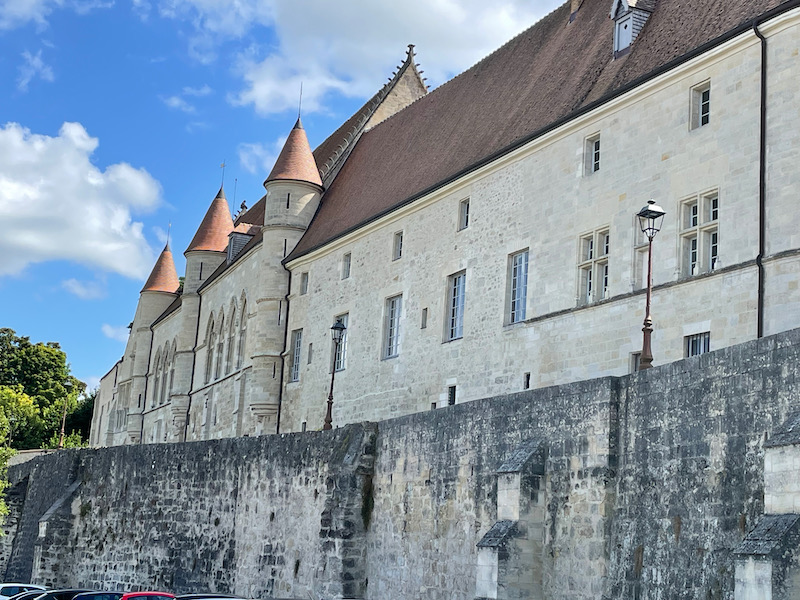
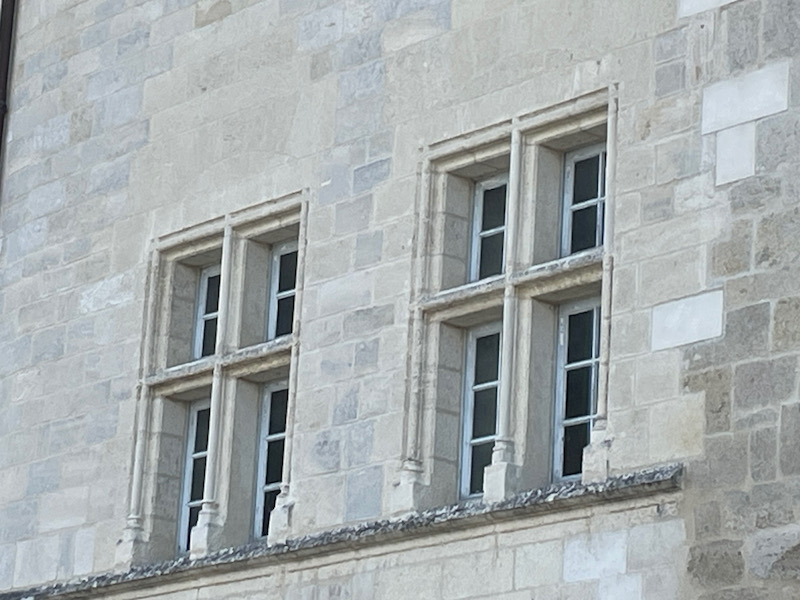
They have several of these wrought iron signs, which is a tradition that dates back to the Middle Ages.
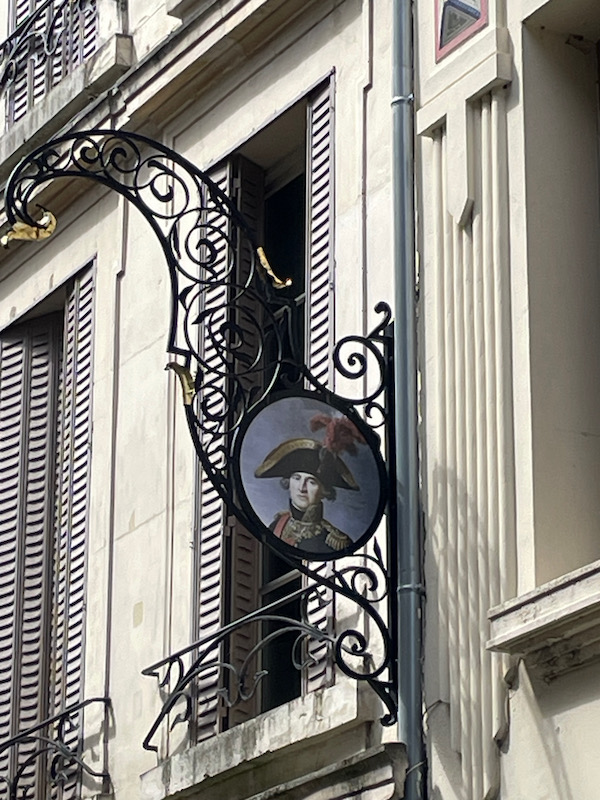
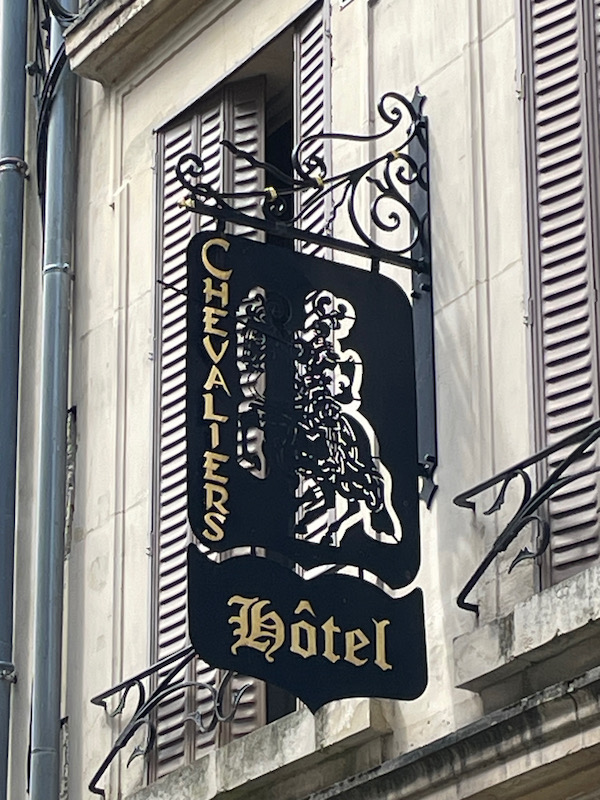
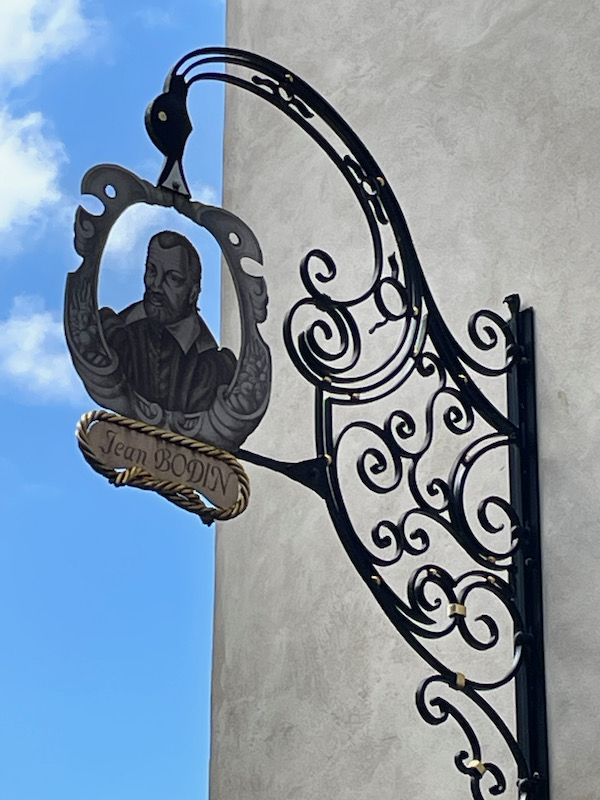
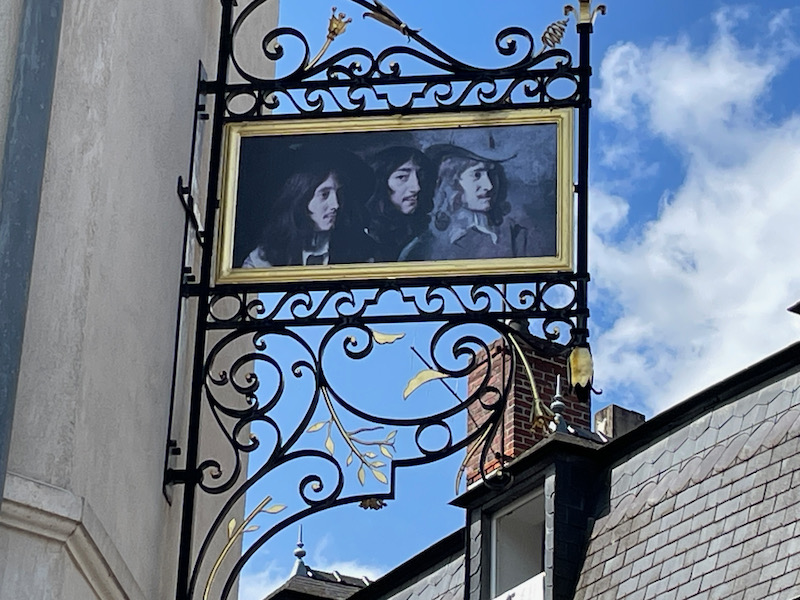
The Hotel de Ville was built in between 1836 and 1838 although the building had defects and supposedly had to be rebuilt in 1846. It is in a Neo-classical style with a clock on the pediment. The dates on the clock don't match the construction dates I found, but I have no idea why. The coat of arms has 3 Fleur-de-Lis over 3 strange ducks that seem to be missing their beaks and legs. According to the website of the town, The birds without beaks or legs would symbolize, according to some, the knights of Laon who went on crusade, many of whom did not return. Others would say that they represent the bourgeois of Laon who revolted in 1112 against their bishops and lord, whom the king had captured.
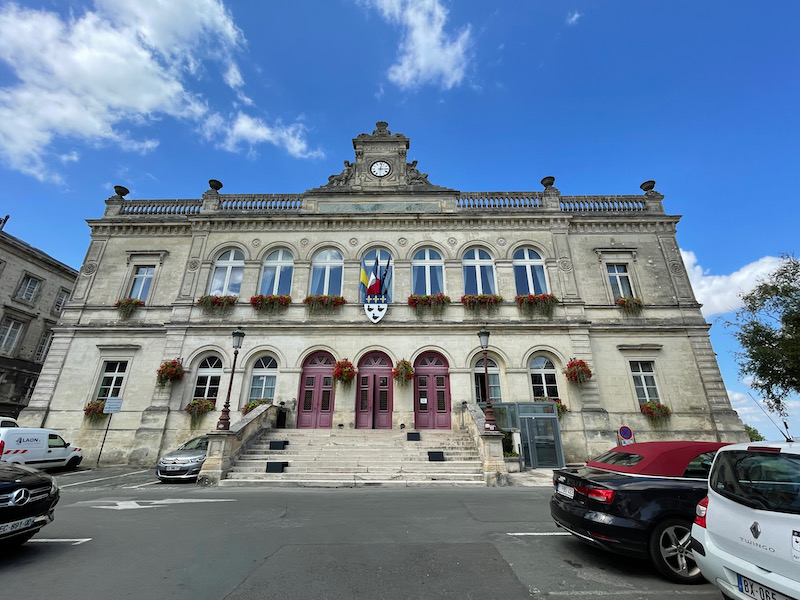
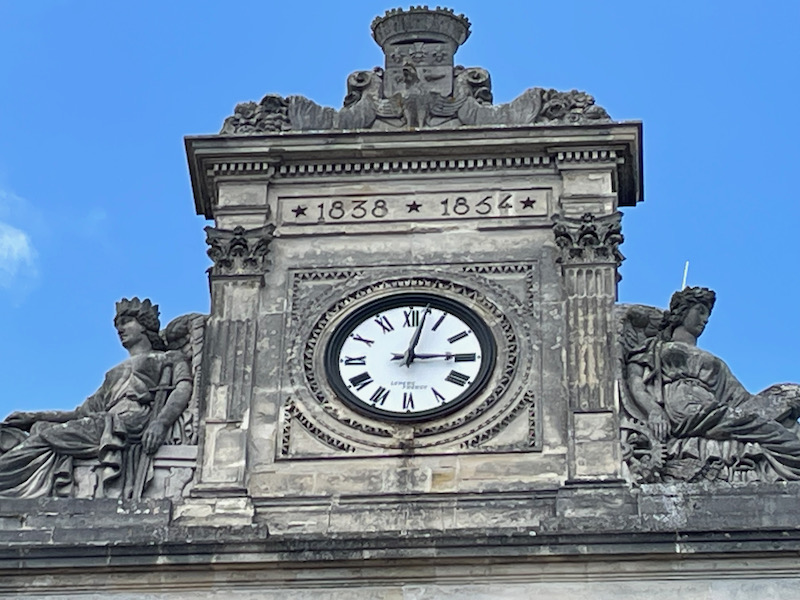
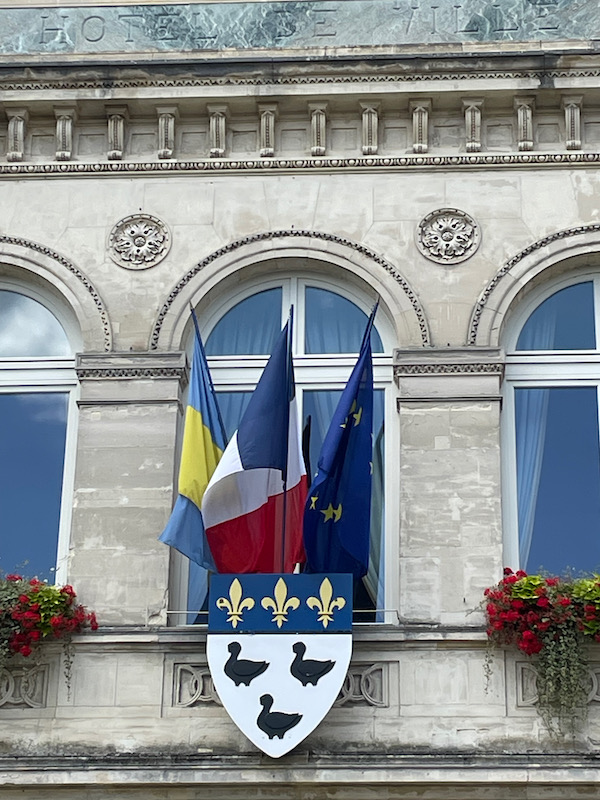
This is the former gate to the previous Hotel de Ville, which dates from the 18th century (1736).
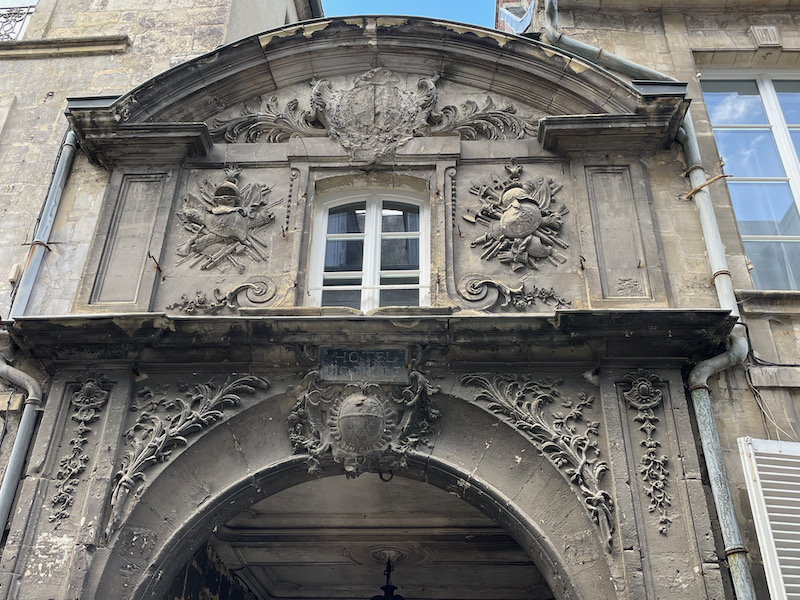
Here you can see parts of the old ramparts that were started in the 9th century and continued through the 13th century. Of the original 18 gates, 3 remain and about 10 towers, out of 40.
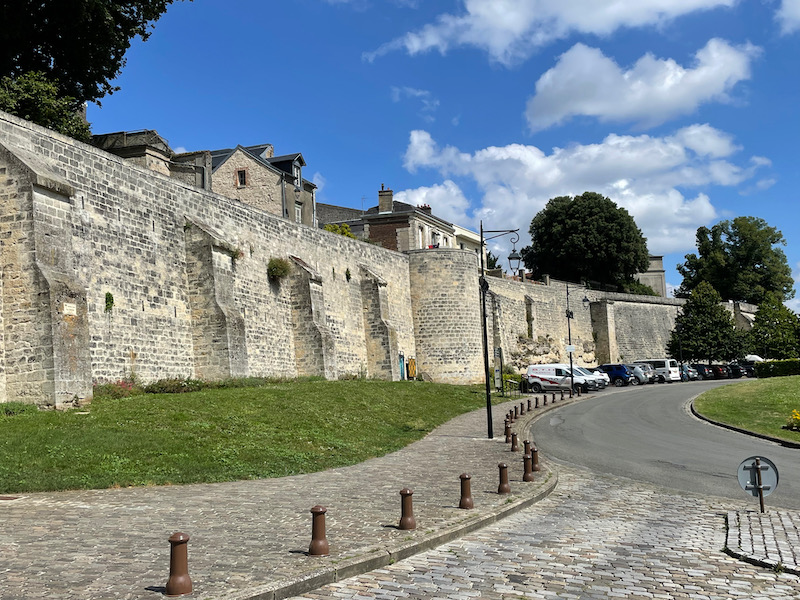
While a gate has been here since the 10th century, this version of the Porte d'Ardon dates from the 13th century and was previously called the Porte Royée because of the proximity to the royal palace.
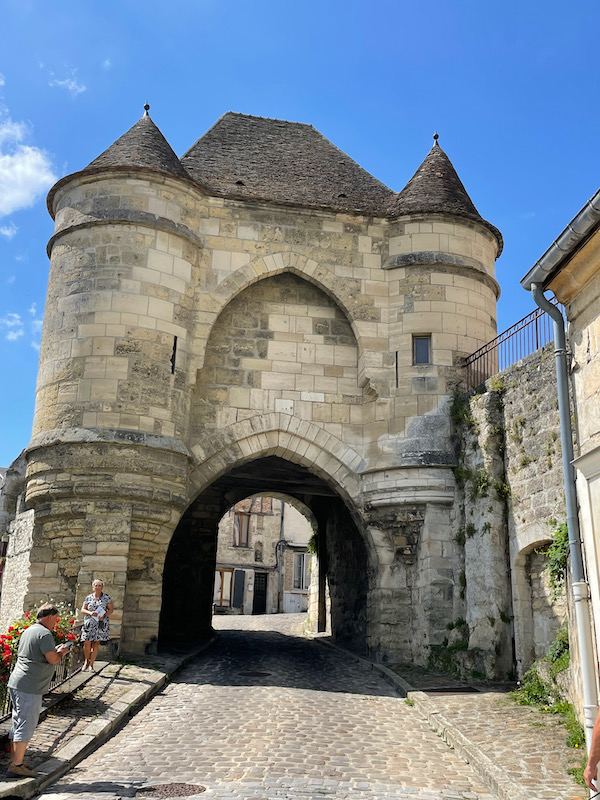
Our last stop was the Chapelle des Templiers, which dates from the 12th century. The Templars established a base in the city in 1128. In 1312, after the dissolution of the Order of the Temple, the chapel returned to the Order of Saint John of Jerusalem. The chapel, octagonal in shape, was built around 1140. The choir of the central building is intended to be a replica of the Holy Sepulcher of Jerusalem. As you can see, there was lots of work going on and so we could only see the onside.
